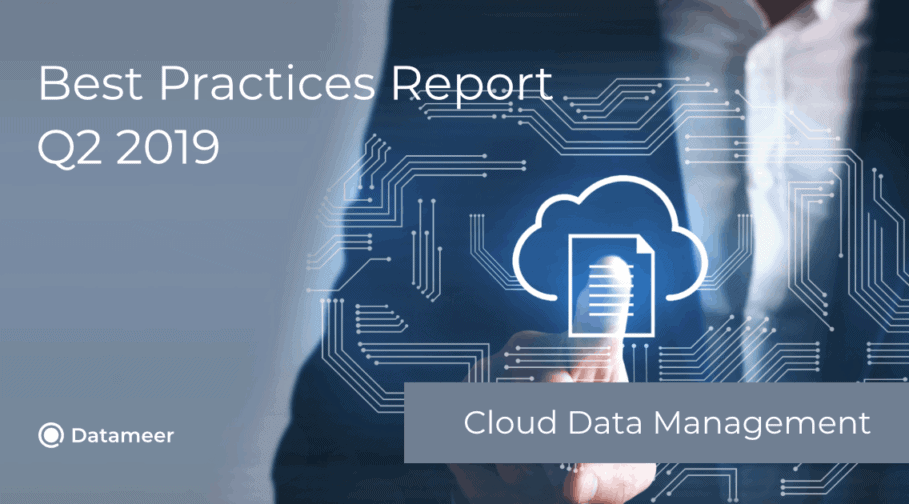What Creates Trust in Data Analytics?
- John Morrell
- April 4, 2020

As the volume of data grows, and more insights are generated from this data, many organizations ask how to better trust analytics results. Because without that trust, business teams cannot be fully confident in becoming more data-driven and driving actions based on analytics.
Creating a great culinary dish often boils down to two key aspects: am I using the best ingredients, and how do I cook the dish? In analytics, the ingredients are data, while cooking is the process the analyst performs to produce the results. Both aspects are critical in creating trust in analytics. Let’s explore how.
Data Literacy
In Predicts 2020: Analytics and Business Intelligence Strategy, a key trend and need Gartner discussed was data literacy — “learning both to ‘talk data’ and to apply and interpret it with a business context.” Data literacy is an essential part of building a data-driven culture and organization.
While data literacy has a common definition, it has slightly different variations to individual personas in the decision-making process:
- Data Analysts – to the team doing the analysis, data literacy focuses on understanding the various datasets at their disposal and how to apply them in answering analytic questions.
- Knowledge workers – to those trying to understand the analytic results, data literacy centers around interpreting data from analytic results to the business situation.
- Management – to the decision-makers, data literacy focuses on if the data tells me what I need to know, whether it makes sense, and clarifies guidance to a set of actions.
Data literacy is an essential part of trust in analytics. The trust is built around some essential pillars of data literacy: knowledge, understanding, sharing, and transparency.
Creating Trust in Data
Trust in data is seen as a major factor holding back data-driven decisions. Building trust in the datasets at their disposal helps the analytics teams in two key ways: it speeds the analytic cycle and helps deliver accurate, confident results. Trust in datasets helps the analyst know where and how to use them, eliminating time wasted in finding the right data for the problem. And once the right, trusted data is gathered, the analysts can dig deep and find meaningful, detailed insights.
To an analyst (as well as other personas), trust in datasets is built from:
- What is the source, and where did the data come from?
- What information is captured in the dataset?
- How is the dataset related to other datasets?
- How has the dataset been used for other analytic problems?
- What does the data tell me?
- How often is the dataset used by analytics team members?
- Which analysts created the dataset and which have used it?
Armed with this information, an analyst can make a fast, guided decision on whether and how to use the dataset to answer their question and quickly move into the analysis phase. This knowledge also helps speed the analysis phase by providing clues as to which areas of the data to explore.
Creating Trust in the Process Through Knowledge Sharing
There is a second type of trust that needs to be built: the business teams trusting the analytic results. This trust is necessary for them to feel confident in executing plans based on the results and for the teams to move away from gut-feel decisions and become more data-driven.
The key to creating trust with the business is allowing the teams to trust the results’ analytics process. This requires a transparent, easily explainable process that shows the business teams how the results were generated and explain its meaning.
To facilitate this, the analytics team needs to supply as much information about the data as possible, which happens through:
- Capturing plain language (non-technical) and business level descriptions about the data behind the results
- Sharing analyst knowledge about the data – where it came from, how it was captured, why it was captured
- Sharing ways the data has been used and other insights generated from it to help business teams put context around it
- Having a complete, easily readable lineage of how the data was modeled and transformed
A robust knowledge-based and collaboration facility around data and analytics processes helps facilitate data capture and sharing. This also helps with data literacy in the business, as business teams are continually exposed to this knowledge and can apply it to their decisions.
The Role of Governance
Governance is always a critical aspect of the data and analytics processes. Policies that are too strong strangle analytics efforts, and if too weak, it creates security and privacy risks.
The same analogy is true relative to facilitating trust in analytics. Governance that is too strong can hurt the knowledge sharing that facilitates trust. Governance that is too weak presents the same risk as above – too much knowledge sharing creates security and privacy risks.
There are ways in which governance policies can walk that fine line. Policies could be put in place that facilitates knowledge sharing without necessarily exposing the underlying data. For example, here are different levels of governance that could support this:
- Data analysts requiring complete modeling and use of the asset would be granted full control of the asset
- Other data analysts who would need to use the asset would be granted access to use the asset
- Business analysts and or knowledge workers would be given access to output from the asset (not the underlying data) and the knowledge around it
This facilitates the business’s knowledge and proper interpretation while maintaining the right levels of governance around the raw data.
Datameer: Building Trust
Building trust in analytics is essential, ranging from the source data to the analytic process to how the results are interpreted. Building trust in data facilitates faster analytic cycles and creating strong trust in the analytic process, and results enable swift, confident data-driven actions.
Datameer SaaS Data Transformation is the industry’s first collaborative, multi-persona data transformation platform integrated into Snowflake. The multi-persona UI, with no-code, low-code, and code (SQL) tools, brings together your entire team – data engineers, analytics engineers, analysts, and data scientists – on a single platform to collaboratively transform and model data. Catalog-like data documentation and knowledge sharing facilitate trust in the data and crowd-sourced data governance. Direct integration into Snowflake keeps data secure and lowers costs by leveraging Snowflake’s scalable compute and storage.
Datameer offers rich c atalog-like data documentation and knowledge sharing to facilitate trust in the data and crowd-sourced data governance. The system auto-generates detailed meta-data, properties, and documentation. Users can add additional documentation and custom attributes, business metadata, comments, tags, and more to share searchable knowledge about your data across the entire analytics community.
With Datameer, you can do the following to build trust:
- Collaborate amongst technical and non-technical team members to build data models and the data transformation flows to fulfill these models, each using their skills and knowledge
- Fully enrich analytics datasets to add even more flavor to your analysis using the diverse array of graphical formulas and functions,
- Use the catalog-like documentation features to crowd-source your data governance processes for greater data democratization and data literacy,
- Maintain full lineage and audit trails of how data is transformed and used by the community to further enable your governance and compliance processes,
Learn more about our innovative SaaS data transformation solution, Sign up for your free trial today!


